Moreton Bay figs and London plane trees that have been cooling some of the city’s favourite urban oases for decades,such as Hyde Park,Lake Claremont,Kings Park and Perth Zoo,are among the targets. A grove of pre-colonial melaleucas faces the chop.
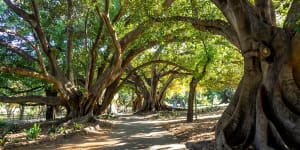
Moreton Bay fig trees at Perth’s Hyde Park have provided shade for visitors for decades.Alamy
By the time the work is finished,the city will be hotter and poorer for it,says Associate Professor Theo Evans from the University of Western Australia,an expert in wood-boring beetles.
Experts looking on from Australia’s east coast are rightly horrified,he says.
“Imagine Sydney,Melbourne and Brisbane without the big old trees in their parks,” Evans says.
And yet,the destruction of the trees is crucial if officials are to stop the spread of a vicious little bug,the polyphagous shot-hole borer,a pest species that like the rabbit and the fox,the cane toad and the fire ant,threatens to either reshape Australian life or cost the country a fortune in eradication efforts.
A 2021 study found that invasive species had cost Australia $389.59 billion since the 1960s and that the annual costs were continuing to grow. But the true cost is incalculable,says the Invasive Species Council’s Dr Carol Booth.
What price do you put on shade in Perth’s parks? What is the value in dollars of an extinction?
Here is Booth’s list of species not yet established in Australia that keeps her up at night.
Polyphagous shot-hole borer
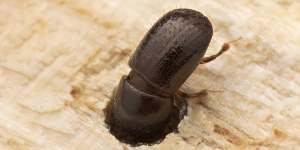
A close-up of the polyphagous shot-hole borer that was first detected in Perth in 2021.Supplied
This sesame seed-sized beetle,native to South East Asia,was first detected in Perth in 2021. It was probably hidden in an imported plant or scrap wood used to protect goods during shipping.
It has yet to find its way to Australia’s east coast.
The term “polyphagous” refers to the beetle’s capacity to feed on,or in,many different types of wood. It’s one of the characteristics that makes it such a dangerous pest.
The shot-hole borer does not eat the wood,but spreads a fungus throughout the vascular system of trees,which it then feeds on,eventually killing it.
It is known to target fruit trees and has decimated the avocado crop in Israel. It also targets several species of eucalyptus.
In Australia,it has proved particularly partial to native figs and introduced shade trees. Experts say the best way to stop its spread is to fell the hosts and grind them down to parts less than 2.5 centimetres in length,hence its threat to urban canopies.
Rock snot
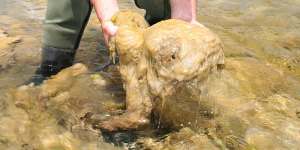
Rock snot can cover creeks and rivers with thick slime.Centre for Invasive Species Research
This is an unpleasant term for a particularly unpleasant invader,didymosphenia geminata,also known as didymo,a species of algae.
Rock snot is thought to be native to New York,but is now commonly found in rivers and streams across parts of Europe and North Asia. It can cover whole rivers and creeks in thick slime.
It is thought to colonise new territories by hitchhiking on fishing gear,but its spread and the scale of its infestations are increasing as the climate warms.
It first entered the southern hemisphere in 2004,spreading through New Zealand despite control measures.
Ferret
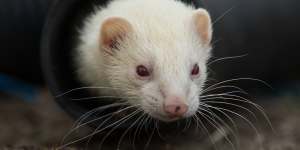
Ferrets are a popular pet in Australia.Simon Schluter
To Booth’s frustration,ferrets remain popular pets in several states even though they have been assessed as posing a severe threat if they establish themselves in the wild,as they have in New Zealand.
They are aggressive hunters and would help wipe out what is left of the small native fauna in our forests not already killed off by cats,dogs and foxes.
Boa constrictor
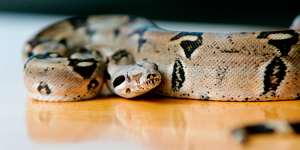
Boa constrictors are being kept as pets both legally and illegally in Australia.Joseph Feil
Another popular pet,and another animal that could easily establish itself in Australia under the right circumstances.
“They are already in so many homes,legally and illegally. It is almost only a matter of time before a pregnant one escapes,” Booth said.
Climbing perch
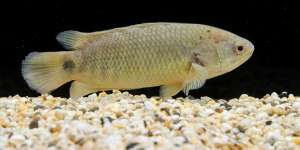
The climbing perch has spikes that can kill birds and other fish.Supplied
This freshwater fish,which has the startling capacity to live for up to 10 hours on land and even crawl or wriggle between water sources,has already made its way to Australian islands in the Torres Strait having successfully invaded Papua New Guinea.
It is not only a predator in its own right,but its spikes can kill the birds and fish that would prey up it.
Rosy predator snail
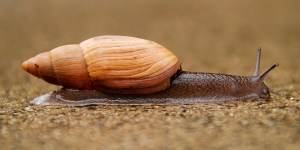
The rosy predator snail has likely caused hundreds of snail extinctions in the Pacific.Supplied
This freshwater predatory snail,now invasive in parts of South East Asia from the aquarium trade,is probably one of the planet’s worst extinct drivers,says Booth,having likely caused hundreds of snail extinctions on Hawaii and other Pacific islands.
With the increasing popularity of home aquariums,this species could be imported to Australia and escape into our waterways. With no native predatory snails,this introduction would be catastrophic for aquatic ecosystems.
Murder hornet
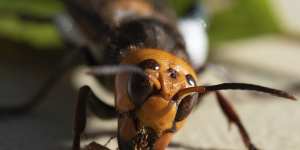
The murder hornet has swept through South Korea,France and North America.Washington State Department of Agriculture
The Asian giant hornet,Vespa mandarinia,has been nicknamed the “murder hornet” due to its aggressive behaviour and highly venomous sting. Deaths are regularly attributed to it and,leading to several injuries and one person falling down a 10-metre slope.
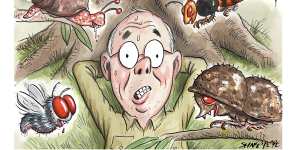
Scientists fear the worst.Shakespeare
Large and invasive,it has wiped out bee populations and impacted on other invertebrates such as other wasps,butterflies and spiders. It has spread through South Korea,France and North America after accidental introduction.
Highly pathogenic avian flu
Asked to identify her gravest fear,Booth named the highly pathogenic avian influenza. “It is having such a horrendous impact around the world on so many different wild bird species. The risk has been assessed recently as ‘high’[for Australia] and it’s sort of like we’re just waiting for it to get here now.”
After the first suspected case was reported in Antarctica on New Year’s Eve last year,and later confirmed,Australia remains the last continent without HPAI. It has recently caused mass die-off events in marine birds around the world and it has crossed over to marine mammals in South America.
Start the day with a summary of the day’s most important and interesting stories,analysis and insights..